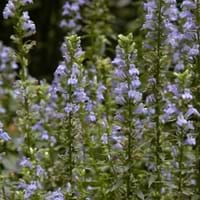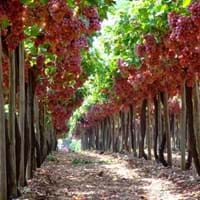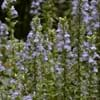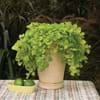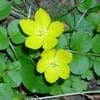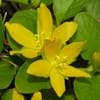Life Span
Perennial
Annual and Perennial
Origin
Northeastern United States, Mid-Atlantic United States, Southeastern United States, Central United States, Texas, Canada
Hybrid origin
Types
Not available
not available
Habitat
Open areas, stream banks, Wet Woods
Terrestrial
USDA Hardiness Zone
4-8
5-8
Sunset Zone
1a, 1b, 2a, 2b, 3a, 3b, 4, 5, 6, 7, 8, 9, 14, 15, 16, 17
1a, 1b, 2a, 2b, 3a, 3b, 4, 5, 6, 7, 8, 9, 14, 15, 16, 17, 18, 19, 20, 21, 22, 23, 24
Habit
Clump-Forming
Vining/Climbing
Minimum Width
Not Available
Flower Color
Blue, Lavender, Blue Violet
White
Flower Color Modifier
Bicolor
Bicolor
Fruit Color
Not Available
Dark Red, Violet
Leaf Color in Spring
Green, Dark Green
Green
Leaf Color in Summer
Green, Dark Green
Green
Leaf Color in Fall
Green, Dark Green
Orange, Gold, Bronze
Leaf Color in Winter
Light Green
Light Green
Leaf Shape
Lanceolate
Irregular
Plant Season
Summer, Fall
Spring, Summer, Fall
Sunlight
Full Sun, Partial Sun, Partial shade
Full Sun, Partial Sun
Type of Soil
Clay, Loam
Clay, Loam, Sand
The pH of Soil
Acidic, Neutral, Alkaline
Acidic, Neutral, Alkaline
Soil Drainage
Average
Well drained
Bloom Time
Summer, Late Summer, Early Fall
Late Spring, Early Summer, Summer
Tolerances
Deer resistant, Shade areas, Wet Site
Drought
Where to Plant?
Ground
Container, Ground
How to Plant?
Divison, Seedlings
Seedlings, Transplanting
Plant Maintenance
Low
Medium
Watering Requirements
Do not let dry out between waterings, Needs Very high moisture, Requires consistently moist soil
Water occasionally
In Summer
Lots of watering
Less Watering
In Spring
Moderate
Adequately
In Winter
Average Water
Ample Water
Soil pH
Acidic, Neutral, Alkaline
Acidic, Neutral, Alkaline
Soil Type
Clay, Loam
Clay, Loam, Sand
Soil Drainage Capacity
Average
Well drained
Sun Exposure
Full Sun, Partial Sun, Partial shade
Full Sun, Partial Sun
Pruning
Remove damaged leaves, Remove dead branches, Remove dead flowers, Remove dead leaves, Remove deadheads
Remove damaged leaves, Remove dead branches, Remove dead leaves
Fertilizers
10-10-10, Balanced liquid fertilizer
All-Purpose Liquid Fertilizer
Pests and Diseases
Head smut, Rust, Slugs, Snails
Red blotch
Plant Tolerance
Deer resistant, Shade areas, Wet Site
Drought
Flowers
Yes
Insignificant
Flower Petal Number
Single
Single
Foliage Texture
Medium
Coarse
Foliage Sheen
Matte
Glossy
Attracts
Bees, Birds, Butterflies, Hummingbirds
Not Available
Allergy
Skin irritation, Skin rash, Toxic if not prepared properly
no allergic reactions
Aesthetic Uses
Beautification, Cottage Garden, Showy Purposes
Decorating walls, Showy Purposes
Beauty Benefits
Skin Problems
used as a dye
Environmental Uses
Air purification
Air purification, soil erosion prevension on hill slopes
Medicinal Uses
Diarrhea, Dysentry, Healing, Stomach pain, Syphilis
Diarrhea, Fever, Headache, Hepatitis, Rheumatism, Stomach pain, Urinary tract problems
Part of Plant Used
Bark, Flowers, Leaves, Root
Fruits, Leaves
Other Uses
Used as Ornamental plant, Used for its medicinal properties
Used for producing cooking oil
Used As Indoor Plant
No
No
Used As Outdoor Plant
Yes
Yes
Garden Design
Mixed Border, Wildflower
Edible, Fruit / Fruit Tree, Vine
Botanical Name
LOBELIA siphilitica
VITIS labrusca 'Fragola'
Common Name
Great blue lobelia, great lobelia
Fox Grape, Red Grape
In Hindi
महान ब्लू लोबेलिआ
लाल अंगूर
In German
Great Blue Lobelia
Rote Trauben
In French
Great Lobelia bleu
Raisin rouge
In Spanish
Gran Lobelia azul
Uvas rojas
In Greek
Μεγάλη Μπλε Lobelia
κόκκινα σταφύλια
In Portuguese
Grande Lobelia azul
Uvas vermelhas
In Polish
Great Blue Lobelia
czerwone winogrona
In Latin
Blue Lobelia
uva,
Phylum
Magnoliophyta
Magnoliophyta
Class
Magnoliopsida
Magnoliopsida
Order
Campanulales
Rhamnales
Family
Lobeliaceae
Vitaceae
Clade
Angiosperms, Asterids, Eudicots
Angiosperms, Eudicots, Rosids
Tribe
Not Available
Not Available
Subfamily
Lobelioideae
Not Available
Number of Species
Not Available
Season and Care of Great Blue Lobelia and Red Grapes
Season and care of Great Blue Lobelia and Red Grapes is important to know. While considering everything about Great Blue Lobelia and Red Grapes Care, growing season is an essential factor. Great Blue Lobelia season is Summer and Fall and Red Grapes season is Summer and Fall. The type of soil for Great Blue Lobelia is Clay, Loam and for Red Grapes is Clay, Loam, Sand while the PH of soil for Great Blue Lobelia is Acidic, Neutral, Alkaline and for Red Grapes is Acidic, Neutral, Alkaline.
Great Blue Lobelia and Red Grapes Physical Information
Great Blue Lobelia and Red Grapes physical information is very important for comparison. Great Blue Lobelia height is 60.00 cm and width 30.50 cm whereas Red Grapes height is 300.00 cm and width Not Available. The color specification of Great Blue Lobelia and Red Grapes are as follows:
Great Blue Lobelia flower color: Blue, Lavender and Blue Violet
Great Blue Lobelia leaf color: Green and Dark Green
Red Grapes flower color: White
- Red Grapes leaf color: Green
Care of Great Blue Lobelia and Red Grapes
Care of Great Blue Lobelia and Red Grapes include pruning, fertilizers, watering etc. Great Blue Lobelia pruning is done Remove damaged leaves, Remove dead branches, Remove dead flowers, Remove dead leaves and Remove deadheads and Red Grapes pruning is done Remove damaged leaves, Remove dead branches and Remove dead leaves. In summer Great Blue Lobelia needs Lots of watering and in winter, it needs Average Water. Whereas, in summer Red Grapes needs Less Watering and in winter, it needs Ample Water.
